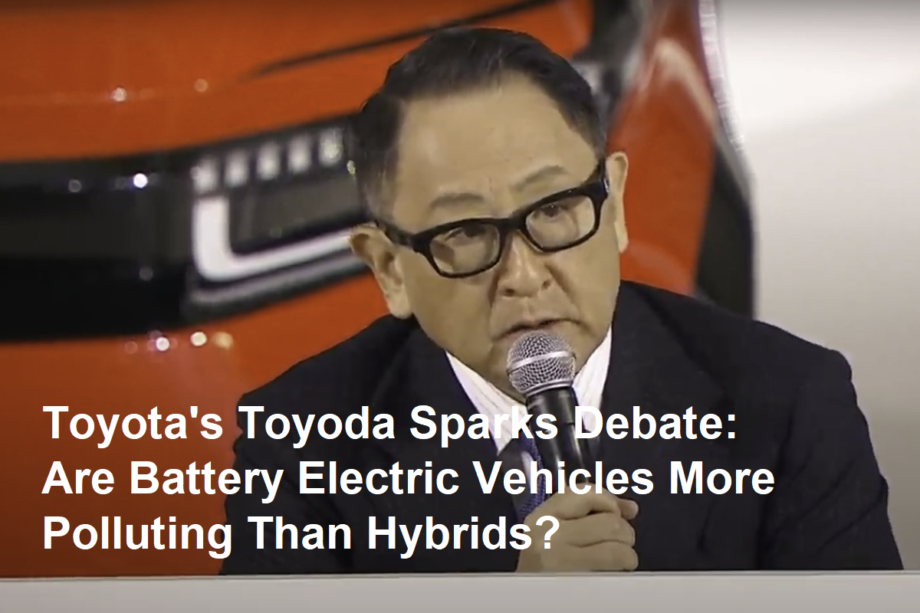Introduction
In April, Toyota’s president Akio Toyoda made waves in the automotive world during an interview with Automotive News. Toyoda boldly stated that Battery Electric Vehicles (BEVs), commonly seen as the eco-friendly future of transportation, actually pollute more than hybrid vehicles. This controversial claim challenges the prevailing notion that electric cars are the ultimate solution for environmental sustainability. Let’s explore the reasoning behind Toyoda’s argument and analyze how this perspective impacts the ongoing debate on green transportation.
Understanding Toyoda’s Position on BEVs and Hybrids
At the heart of Toyoda’s statement is the environmental cost associated with the manufacturing and lifecycle of BEVs. While electric vehicles (EVs) produce zero tailpipe emissions, the production of their batteries involves intensive mining and processing of raw materials such as lithium, cobalt, and nickel. This extraction process is energy-demanding and generates significant carbon emissions. In comparison, hybrid vehicles, which combine internal combustion engines with electric motors, have smaller batteries and a potentially lower environmental footprint during production.
Toyoda emphasizes that when evaluating a vehicle’s true environmental impact, it’s crucial to consider the entire lifecycle—from mining and manufacturing to energy consumption and disposal. The current grid energy mix in many countries, which often relies heavily on fossil fuels, further complicates the clean energy claims of BEVs. If the electricity used to charge BEVs comes from coal or natural gas power plants, the indirect emissions may offset the zero-emission advantage of these cars on the road.
The Lifecycle Emissions Debate
This lifecycle assessment perspective is not new but has gained renewed attention in light of Toyoda’s comments. Different studies show varying results depending on geographic factors, energy sources, and technological advancements. Regions with a high share of renewable energy in their grids tend to show a clear advantage for BEVs over traditional vehicles, including hybrids. In contrast, areas dependent on fossil fuels may see narrower environmental benefits.
Additionally, battery recycling and second-life applications for EV batteries could play a vital role in reducing overall emissions. The development of more sustainable mining techniques and alternative battery chemistries also holds promise for lessening the environmental impact of BEVs in the future.
Toyota’s Hybrid Leadership and Strategic Approach
Toyota has long been a pioneer and leader in hybrid technology, with the Prius symbolizing this success. The company’s strategic focus on hybrids reflects its vision of a gradual transition to cleaner mobility rather than an abrupt switch to full electric. Toyoda’s remarks underline Toyota’s belief in a diversified approach, including hybrids, BEVs, hydrogen fuel cell vehicles, and improved internal combustion engines.
This multi-pronged strategy aims to balance environmental goals with practical considerations such as infrastructure readiness, raw material availability, and consumer preferences.
What This Means for Consumers and the Industry
For consumers, Toyoda’s statement serves as a reminder to look beyond marketing claims and consider the broader environmental footprint of their vehicle choices. It also pushes the automotive industry to innovate and deliver truly sustainable solutions that minimize environmental harm throughout a vehicle’s lifecycle.
For policymakers and environmental advocates, the debate sparked by Toyota’s perspective highlights the need to invest in cleaner energy grids, promote recycling technologies, and foster innovation in battery development.
Conclusion
Akio Toyoda’s April interview challenges the simple narrative that “electric is always cleaner.” By highlighting the hidden environmental costs of BEVs compared to hybrids, he calls for a more nuanced and holistic assessment of vehicle sustainability. While BEVs remain a critical piece of the green transportation puzzle, embracing a variety of technologies and improving energy infrastructure will be essential to achieving meaningful reductions in pollution and carbon emissions.
As the debate continues, consumers and industry leaders alike will benefit from transparency, innovation, and a commitment to genuine environmental responsibility.









